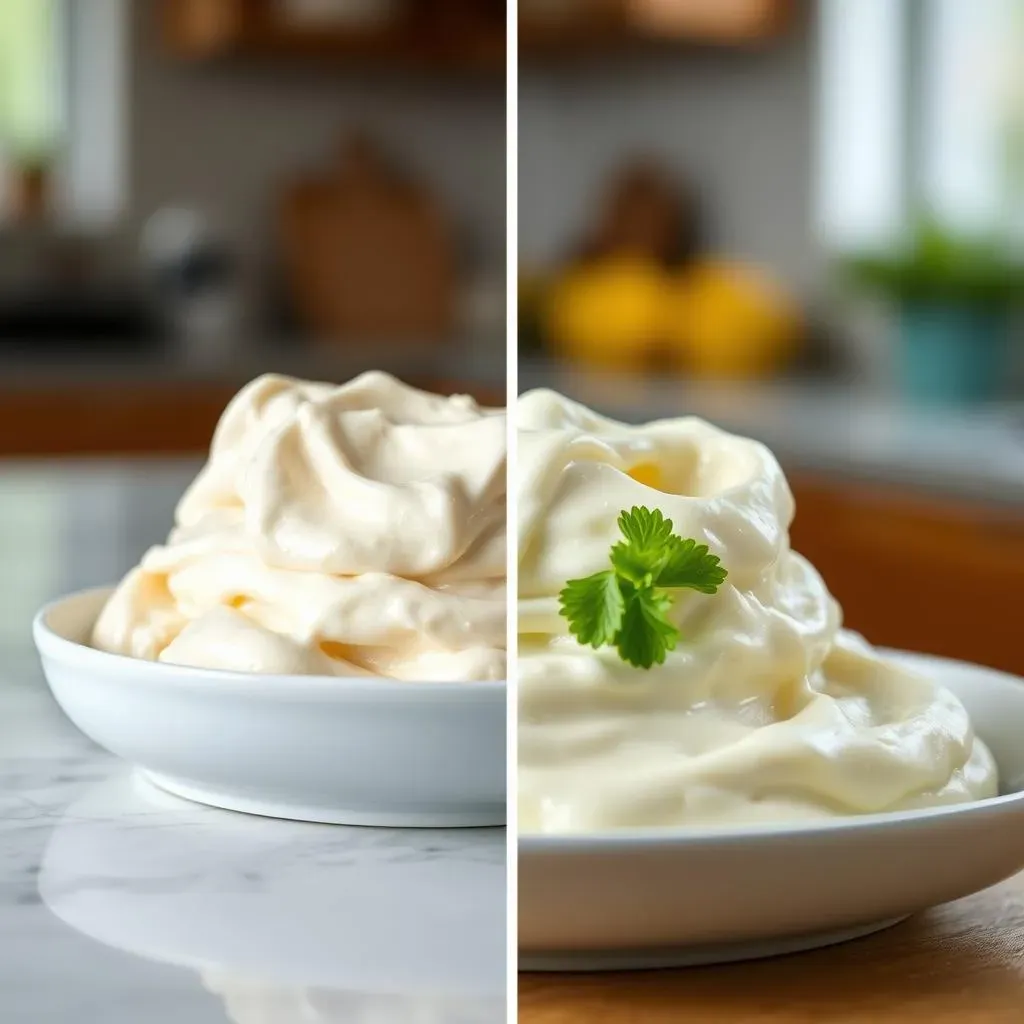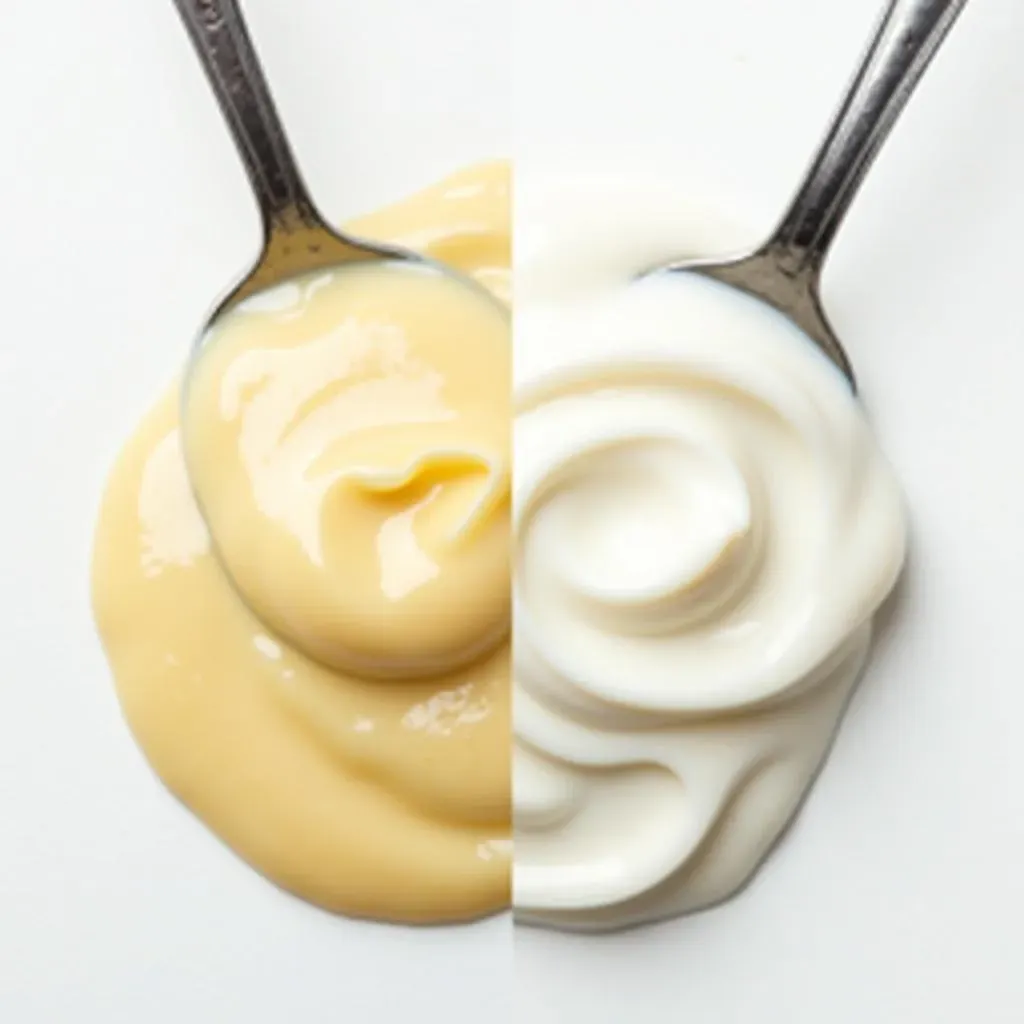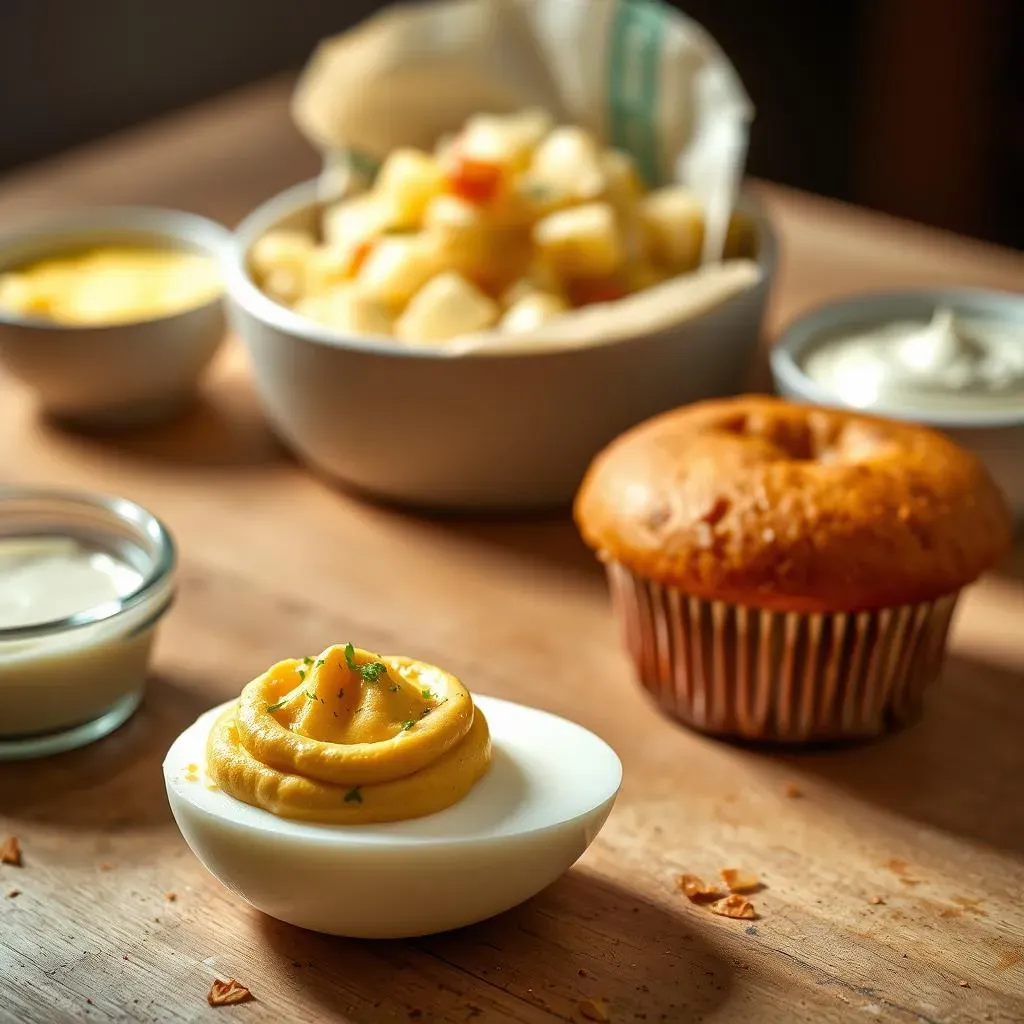Table of Contents
Ever stared blankly at a recipe, only to realize you're missing a key ingredient – sour cream? Before you dash to the store, let's explore a tempting alternative: mayonnaise. The question burning in many a cook's mind is: "Can you substitute mayo for sour cream?" This article dives headfirst into that creamy conundrum, examining the subtle yet significant differences between these two pantry staples. We'll go beyond a simple yes or no, delving into the nuances of taste and texture. Prepare for a side-by-side comparison, a taste test of sorts, that will help you understand when swapping mayo for sour cream is a genius move, and when it’s a culinary catastrophe waiting to happen. We’ll also explore specific recipes where this substitution shines (and where it utterly fails). Get ready to unlock the secrets to successful ingredient swaps and elevate your cooking game!
Can You Substitute Mayo for Sour Cream? The Great Culinary Debate

Can You Substitute Mayo for Sour Cream? The Great Culinary Debate
The Basic Question: Mayo or Sour Cream?
So, you're wondering if you can swap mayonnaise for sour cream. It's a question that's plagued home cooks for ages! The quick answer? Sometimes, yes. But it's not always a simple yes or no. It really depends on what you're making. Both are creamy, but their flavors and textures differ significantly. Mayonnaise boasts a richer, more emulsified texture, thanks to its oil and egg base. Sour cream, on the other hand, offers a tangier, slightly sharper flavor profile due to its fermentation process.
Think of it like this: mayonnaise is the smooth, sophisticated cousin, while sour cream is the zesty, slightly quirky aunt. Both have their place at the family gathering (your recipe!), but they don't necessarily fill the same role. Sometimes, one shines where the other falls flat. Let's explore when each condiment reigns supreme!
Characteristic | Mayonnaise | Sour Cream |
|---|---|---|
Flavor | Rich, creamy, slightly eggy | Tangy, slightly acidic, creamy |
Texture | Smooth, emulsified | Thick, slightly lumpy |
Fat Content | Higher | Moderate |
Considering the Consequences: Flavor and Texture Shifts
Swapping mayonnaise for sour cream will almost certainly alter the flavor and texture of your dish. Mayonnaise's richness can overpower more delicate flavors, whereas the tang of sour cream might be missed in recipes where it provides a key acidic counterpoint. For example, in a creamy potato salad, the richness of mayo might be preferable, while in a taco dip, the tanginess of sour cream is essential.
The texture change is equally important. Mayonnaise's smooth consistency might make a cake batter too dense, while its lack of a fermented tang could leave a dip feeling flat. Conversely, the slightly lumpy texture of sour cream might not be ideal in a smooth sauce or dressing. Ultimately, the success of your substitution hinges on understanding these differences and choosing your battles wisely. We'll look at specific recipe examples later to illustrate this better.
- Consider the recipe's overall flavor profile.
- Think about how the texture will change.
- Experiment cautiously – start with a small substitution.
Mayo vs. Sour Cream: A Taste Test and Texture Comparison

Mayo vs. Sour Cream: A Taste Test and Texture Comparison
A Blind Taste Test: Mayo vs. Sour Cream
Okay, let's get down to brass tacks. The best way to understand the differences between mayo and sour cream is to experience them firsthand. I recently conducted a blind taste test with a group of friends (don't worry, they were all properly informed and consented!). We sampled both condiments, noting their flavor profiles, textures, and overall mouthfeel. The results were illuminating.
The mayo, unsurprisingly, was unanimously described as rich, smooth, and slightly eggy. Some found a subtle sweetness, while others detected a hint of vinegar. The texture was incredibly smooth and emulsified, almost luxurious. The sour cream, in contrast, was described as tangy, creamy, and slightly tart. The texture was thicker, with a noticeable slight lumpiness that some found appealing, while others preferred the smoother consistency of the mayonnaise. A few even mentioned a slight lactic tang, characteristic of fermented dairy products.
Taste Tester | Mayonnaise Description | Sour Cream Description |
|---|---|---|
Sarah | Rich, smooth, slightly sweet | Tangy, creamy, slightly tart |
Mark | Creamy, eggy, hint of vinegar | Lumpy, tangy, refreshing |
Emily | Smooth, luxurious, slightly buttery | Creamy, acidic, slightly grainy |
Texture Showdown: Smooth Operator vs. Creamy Chunk
Beyond taste, texture plays a crucial role in determining whether a mayo-for-sour-cream swap will work. Mayonnaise's smooth, emulsified consistency is perfect for dressings and sauces where a smooth, velvety texture is desired. Think of a classic mayonnaise-based potato salad – the smooth texture is key to its appeal. However, this same smooth consistency can be problematic in baked goods. In cakes or muffins, mayo's lack of airiness might lead to a dense, heavy final product.
Sour cream, with its thicker, slightly lumpy texture, adds a delightful creaminess to dips, tacos, and even some baked goods. However, it might not be the best choice for sauces or dressings where a perfectly smooth texture is paramount. The slight graininess of sour cream could be distracting in a silky smooth sauce. Therefore, the best choice depends entirely on the desired outcome – a smooth, luxurious texture or a more rustic, creamy texture.
- Mayonnaise: Excellent for smooth sauces, dressings, and creamy salads.
- Sour Cream: Ideal for dips, toppings, and dishes where a slightly textured creaminess is desirable.
- Consider the desired final texture when making your substitution.
Recipes Where Substituting Mayo for Sour Cream Works (and Where It Doesn't)

Recipes Where Substituting Mayo for Sour Cream Works (and Where It Doesn't)
When Mayo Triumphs: Recipes That Embrace the Swap
Believe it or not, there are instances where mayonnaise shines as a sour cream substitute. Its richness and smooth texture can elevate certain dishes, adding a creamy depth that sour cream sometimes lacks. For example, in creamy potato salad, mayonnaise's smooth consistency creates a luxurious mouthfeel that many find preferable to the slightly lumpy texture of sour cream. The richness of mayo also complements the starchy potatoes beautifully, creating a harmonious blend of flavors and textures. Similarly, in some dressings and dips, mayonnaise's neutral flavor profile allows other ingredients to take center stage, resulting in a balanced and delicious outcome. Think of a classic deviled egg recipe – the creamy, rich texture of mayo is essential to its success.
Another area where mayonnaise can work wonders is in certain baked goods. While it might not be ideal for every recipe, mayonnaise can add moisture and richness to cakes and muffins, resulting in a tender crumb. The high fat content of mayonnaise helps to keep the baked goods moist, preventing them from drying out too quickly. However, remember that the lack of tang from mayonnaise might require adjusting the recipe's overall flavor profile. You might need to add a touch of lemon juice or vinegar to compensate for the missing acidity.
Recipe | Why Mayo Works | Potential Drawbacks |
|---|---|---|
Potato Salad | Smooth texture, rich flavor complements potatoes | Might lack the tang of sour cream |
Deviled Eggs | Creamy texture, neutral flavor allows other ingredients to shine | Can be too rich if used excessively |
Certain Cakes/Muffins | Adds moisture and richness | May lack the tang of sour cream, requiring flavor adjustments |
Where Sour Cream Reigns Supreme: Substitutions to Avoid
While mayonnaise can sometimes stand in for sour cream, there are situations where the substitution simply won't work. Recipes that rely on the distinct tang and slightly thinner consistency of sour cream will suffer if mayonnaise is used as a replacement. For instance, in Mexican dishes like tacos or enchiladas, the tangy flavor of sour cream provides a crucial counterpoint to the richness of the meat and cheese. Substituting mayonnaise would result in a dish that's overly rich and lacks the necessary acidity to balance the other flavors.
Similarly, in dishes where sour cream is used as a topping or garnish, the textural differences become more pronounced. The slightly lumpy texture of sour cream adds a pleasant contrast to the crispness of tortilla chips or the smoothness of a baked potato. Mayonnaise, with its smooth consistency, simply won't provide the same textural experience. Finally, in recipes where sour cream is a key component in creating a specific type of sauce or glaze, such as a creamy mushroom sauce, the substitution of mayonnaise could significantly alter the final product's consistency and taste, resulting in an inferior outcome. In these cases, sticking to sour cream is the best option for optimal flavor and texture.
- Tacos and Enchiladas: The tang of sour cream is essential.
- Toppings and Garnishes: Textural differences are too significant.
- Sauces and Glazes: Mayonnaise will alter consistency and flavor.